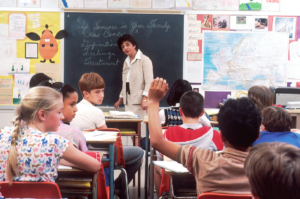Gamification in education represents a transformative approach to learning, integrating elements of game design into educational activities to engage and motivate students. By leveraging game mechanics, such as competition, rewards, and challenges, educators can create dynamic learning environments that foster enthusiasm, collaboration, and deeper understanding among learners. This article explores the concept of gamification in education, its benefits, implementation strategies, and its impact on student engagement and learning outcomes.
Understanding Gamification in Education
Gamification involves applying game principles and mechanics to non-game contexts, such as education. In this context, educational tasks are designed to mimic the engaging and interactive aspects of games, making learning more enjoyable and motivating for students. Elements like points, levels, badges, and leaderboards are integrated into lessons and activities to incentivize participation and progress.
The key to effective gamification lies in engagement. Games are inherently captivating because they provide clear goals, immediate feedback, and a sense of accomplishment. By infusing these elements into educational activities, educators can capture and maintain students’ interest, transforming potentially mundane tasks into compelling learning experiences.
Benefits of Gamification in Education
The benefits of gamification in education are multifaceted. One of the primary advantages is increased motivation. Games tap into intrinsic motivators, such as autonomy, mastery, and purpose, which are essential for sustaining long-term engagement in learning. When students perceive learning tasks as enjoyable and meaningful, they are more likely to invest time and effort into mastering them.
Moreover, gamification enhances learning retention. By providing immediate feedback and opportunities for practice, games reinforce learning concepts and skills in a memorable way. This repetitive reinforcement contributes to stronger retention and application of knowledge over time.
Furthermore, gamification fosters collaboration and social interaction among students. Many games incorporate cooperative or competitive elements that encourage teamwork, communication, and peer support. Collaborative learning experiences not only deepen understanding but also promote social skills and empathy.
Implementation Strategies
Successful implementation of gamification requires careful planning and consideration of educational goals and student needs. Here are some effective strategies:
Set clear learning objectives: Align gamified activities with curriculum goals and learning outcomes to ensure relevance and academic rigor.
Design meaningful rewards: Create incentives, such as virtual badges, levels, or points, that signify achievement and progress. These rewards should be tied to learning milestones and mastery of skills rather than mere participation.
Provide immediate feedback: Use game mechanics to offer real-time feedback on student performance. Constructive feedback helps students gauge their progress and adjust their strategies accordingly.
Promote autonomy: Allow students some degree of choice and control over their learning paths within gamified activities. This autonomy enhances intrinsic motivation and encourages self-directed learning.
Impact on Student Engagement and Learning Outcomes
The impact of gamification on student engagement and learning outcomes is well-documented. Research indicates that gamified learning environments can lead to increased levels of participation, improved academic performance, and higher retention rates compared to traditional instructional methods.
Gamification also cultivates 21st-century skills such as critical thinking, problem-solving, and decision-making. These skills are essential for success in today’s interconnected and rapidly changing world, making gamification a valuable tool for preparing students for future challenges.
Moreover, gamification personalizes learning experiences by catering to individual preferences and learning styles. Adaptive technologies and customizable game mechanics allow educators to tailor instruction to meet diverse student needs, promoting inclusivity and equity in education.
Challenges and Considerations
Despite its benefits, gamification in education faces certain challenges. Implementation complexity and resource constraints can pose barriers, particularly for educators unfamiliar with game design principles or lacking access to appropriate technology.
Additionally, maintaining student engagement over time requires careful balance. Designing sustainable gamified experiences that continue to challenge and motivate students without becoming repetitive or overwhelming is essential.
Furthermore, assessment and evaluation in gamified environments may differ from traditional methods. Educators must develop valid and reliable measures to gauge student progress and learning outcomes within gamified contexts.
Future Directions
Looking ahead, the future of gamification in education appears promising. Advances in educational technology continue to drive innovation, offering new opportunities for immersive and interactive learning experiences.
Moreover, ongoing research and development in gamification are expanding our understanding of its potential impact on student learning and motivation. Evidence-based practices and frameworks are emerging to guide educators in designing effective gamified learning environments.
Policy initiatives and professional development efforts are also crucial for scaling gamification in education. By investing in educator training and support, policymakers can promote widespread adoption of gamified approaches that enhance educational outcomes and prepare students for success in the digital age.
In conclusion, gamification in education represents a dynamic approach to fostering engagement, motivation, and learning among students. By integrating game design principles into educational practices, educators can create immersive and effective learning experiences that empower students to achieve their full potential. As technology evolves and best practices evolve, gamification continues to hold promise as a transformative tool for enhancing education and preparing students for future challenges.



